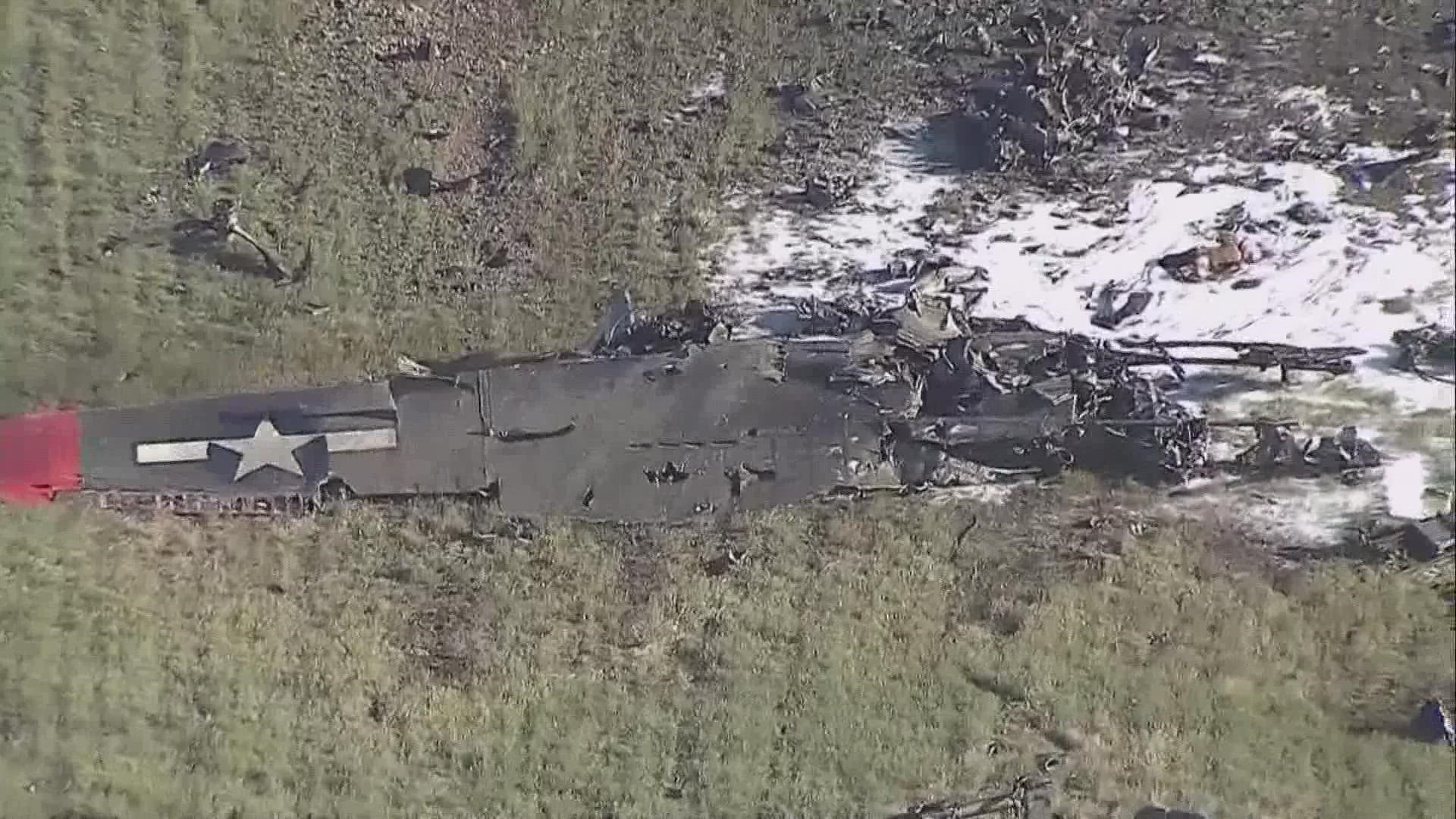DALLAS — Investigators with the National Transportation Safety Board discovered both planes involved in the deadly air show plane crash in Dallas on Saturday had GPS devices onboard.
In a press conference Monday afternoon, NTSB member Michael Graham said crews found the devices severely damaged and have sent them to a lab to see what data, if any, can be recovered. Graham shared that the devices have better information than radar data.
“Onboard devices may be able to be a little more specific, give a few more hits on where the aircraft are on their speeds in between the lapses on the radar,” Graham said.
Five people on board a B-17 Flying Fortress were killed along with the pilot of a P-63 King Cobra during the Wings Over Dallas air show that featured several World War II-era planes.
Wreckage of the crash was scattered over Highway 67 and over the airfield at Dallas Executive Airport. NTSB officials said Monday’s rain delayed recovery of the wreckage which will be sent to a separate site for inspection.
“Anytime you see you a midair collision, it’s just so tragic,” Ladd Sanger, a pilot and aviation attorney, said.
Sanger has investigated and litigated airplane crash cases before and said there will be a long review of everything from maintenance records to air traffic control audio.
"Accident prevention starts before the planes even take off. It starts with a plan," Sanger said. "It starts with everyone knowing where they’re supposed to be and staying where they’re supposed to be."
The NTSB said they’re already going through critical video evidence.
“Being an airshow, we received quite a bit of this, and we have staff working on this right now and they’re going to be at it for quite a while,” Graham said.
Sanger said the video he’s seen appears to show the P-63 was out of position and made a wide turn.
“What it looks like to me is the king cobra was fast and as it was turning the radius of the turn increased,” he said. “Unless he could see through the wing and the bottom of the king cobra., he could’ve never seen the B-17.”
Investigators haven’t placed blame on the pilot, the plane or the planning. Sanger said he’s unfortunately had several cases involving older World War II-era planes.
“The level of risk of flying in those older airplanes is higher than I would want someone in my family to be exposed to,” he said. “They’re being maintained by largely retired folks. They’re being flown by largely retired folks.”
The NTSB said a preliminary report should be out in four to six weeks, but the full investigation will take 12 to 18 months to complete.

